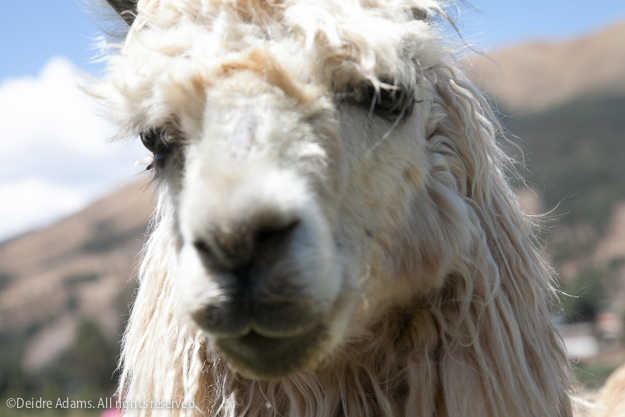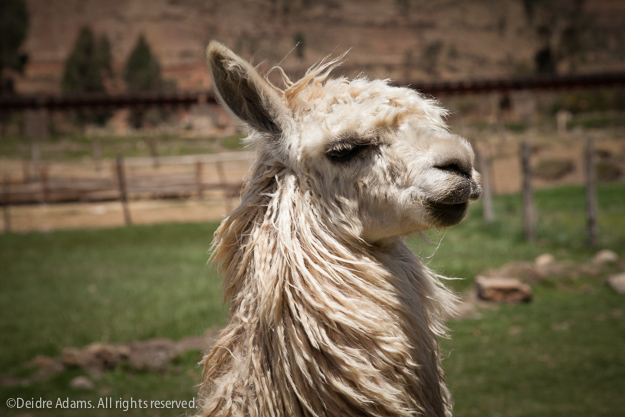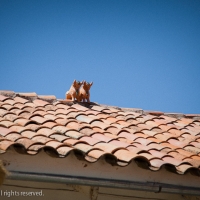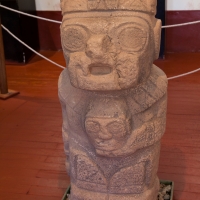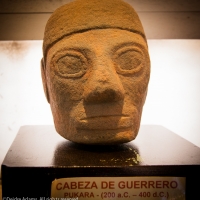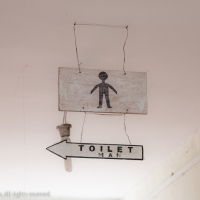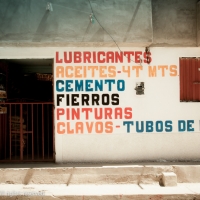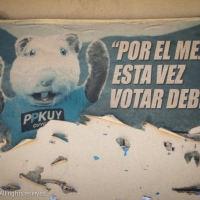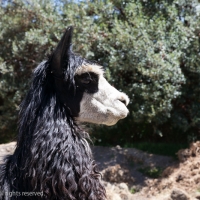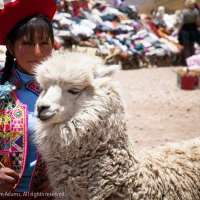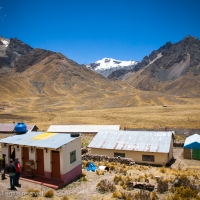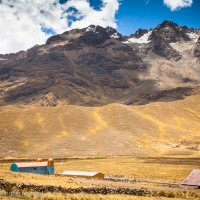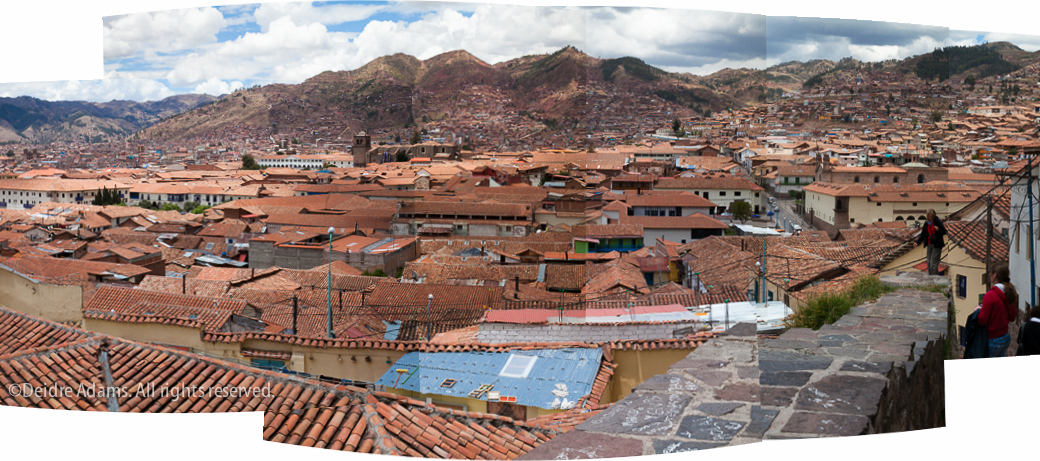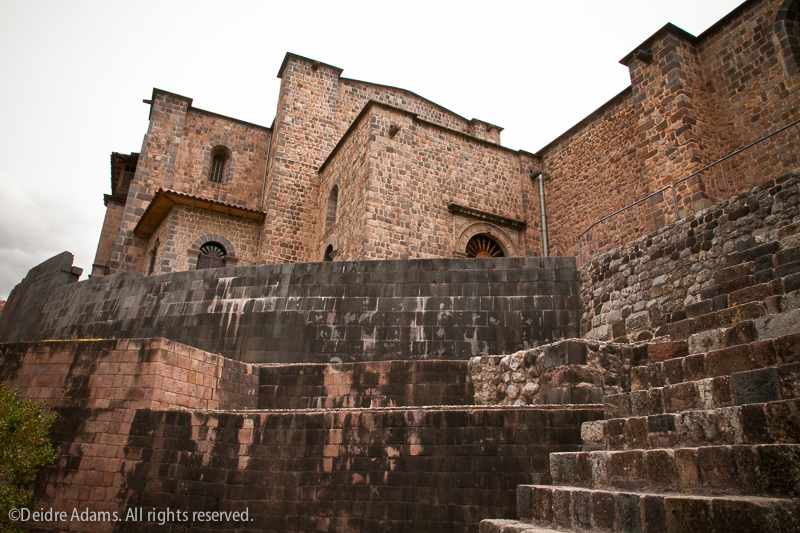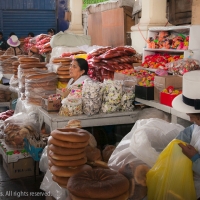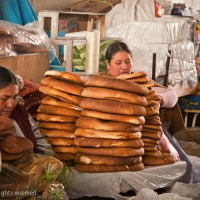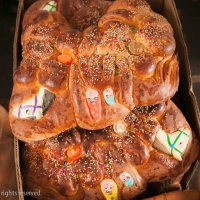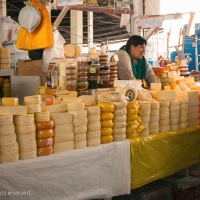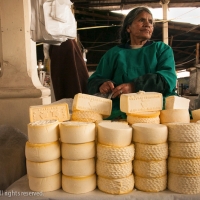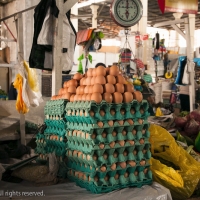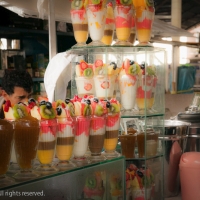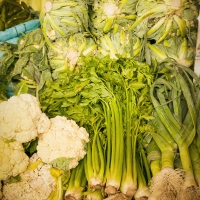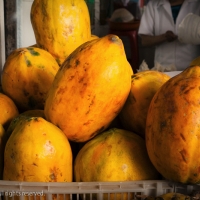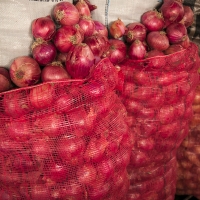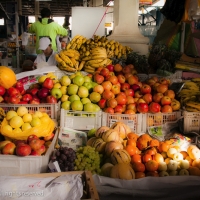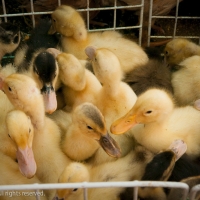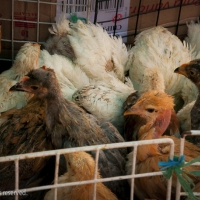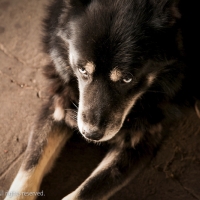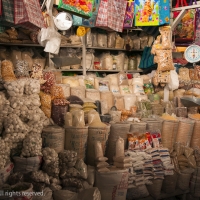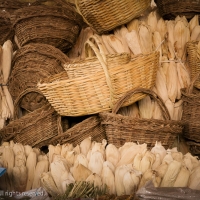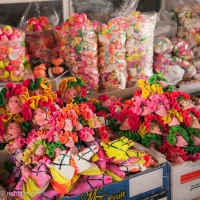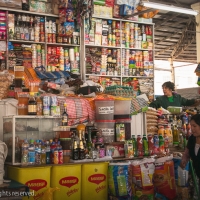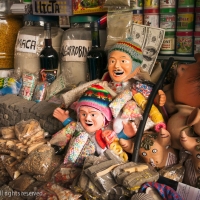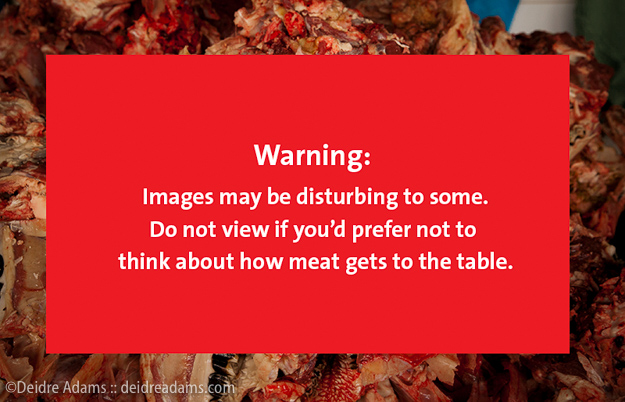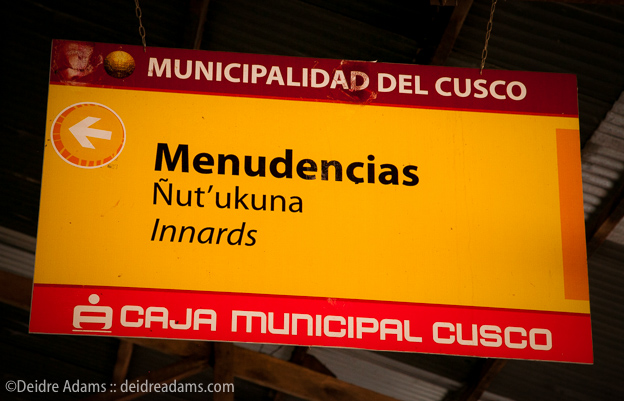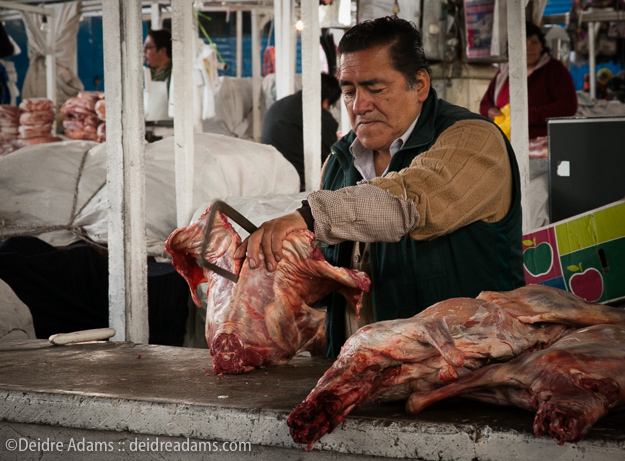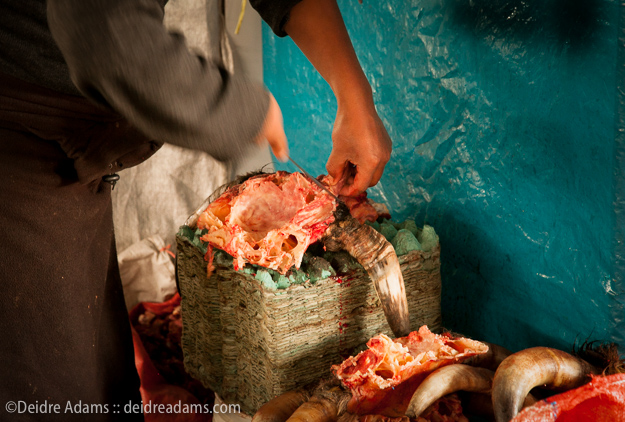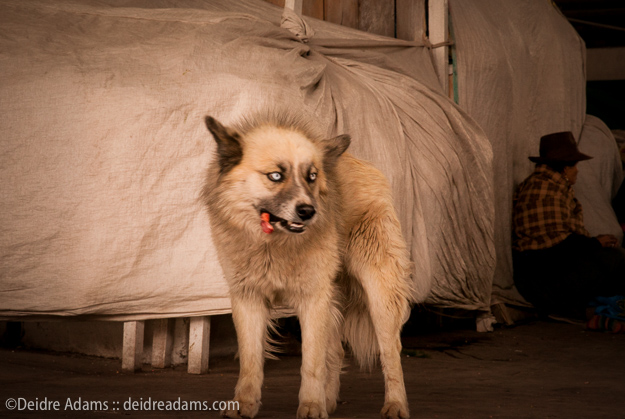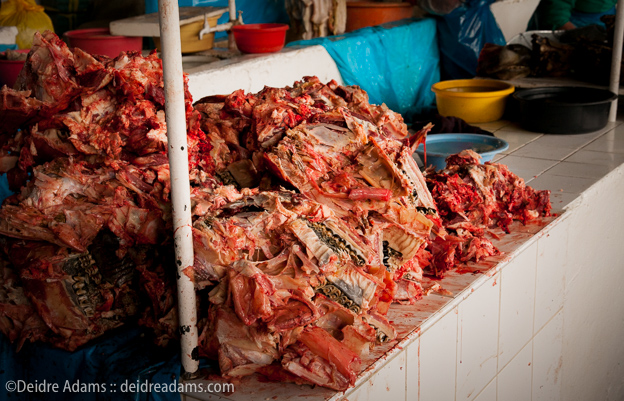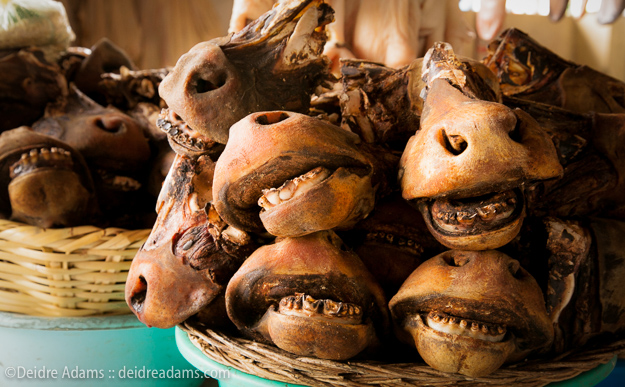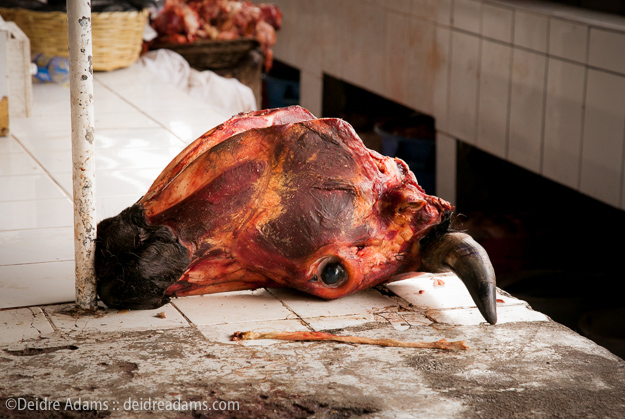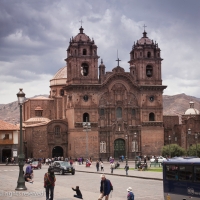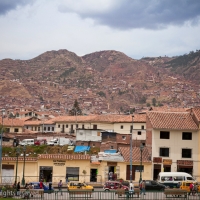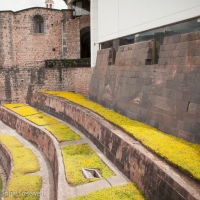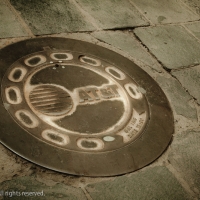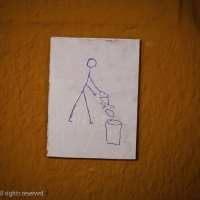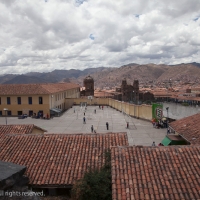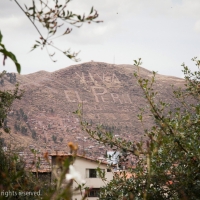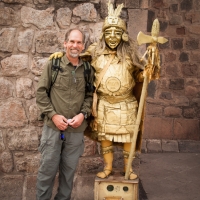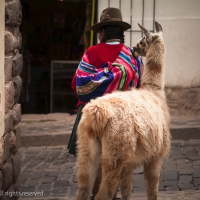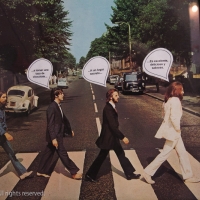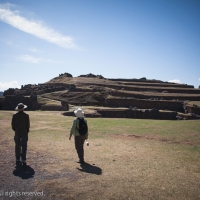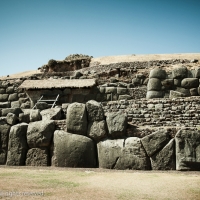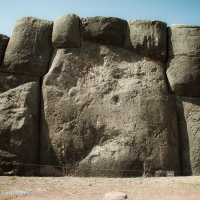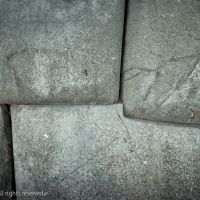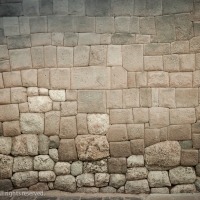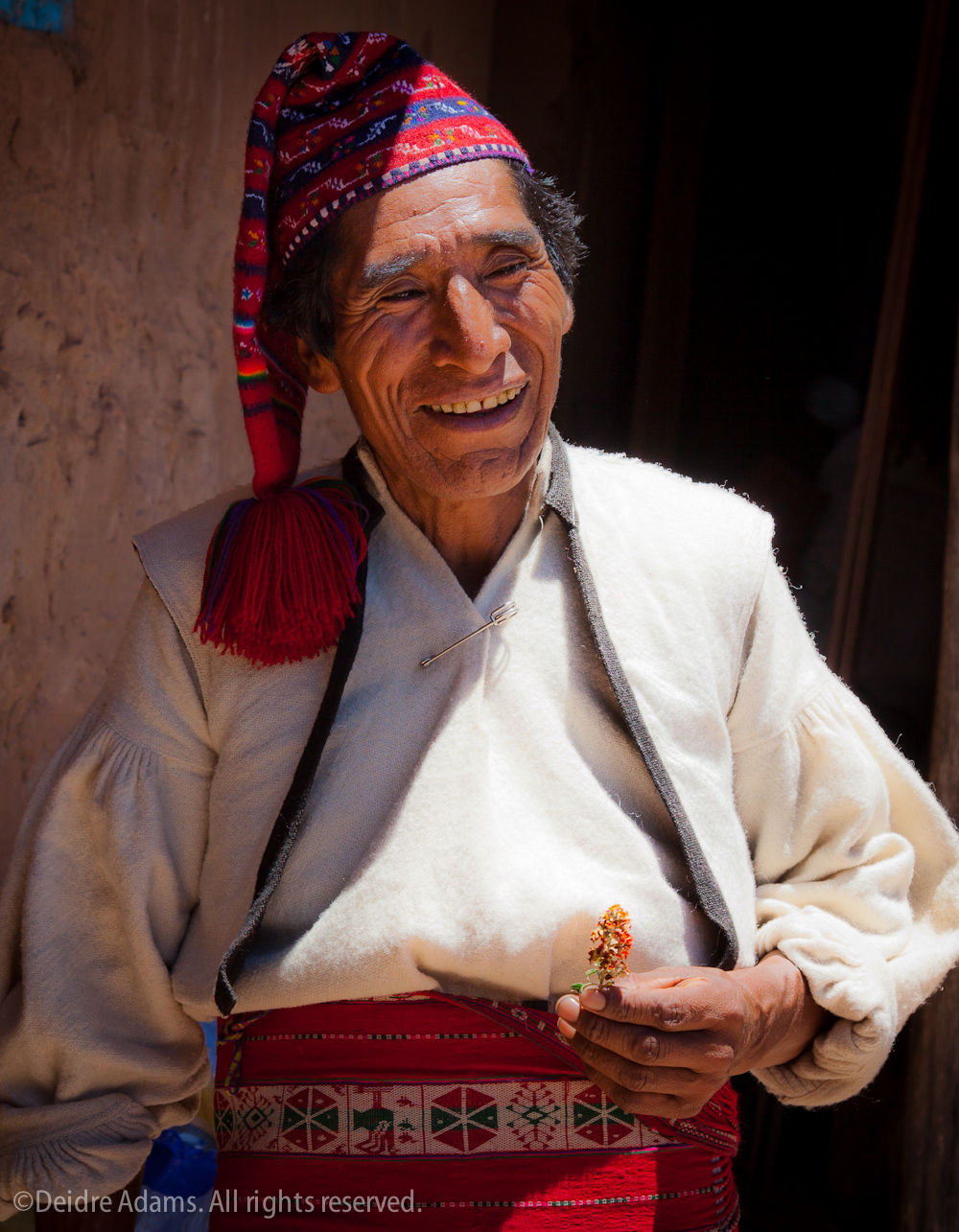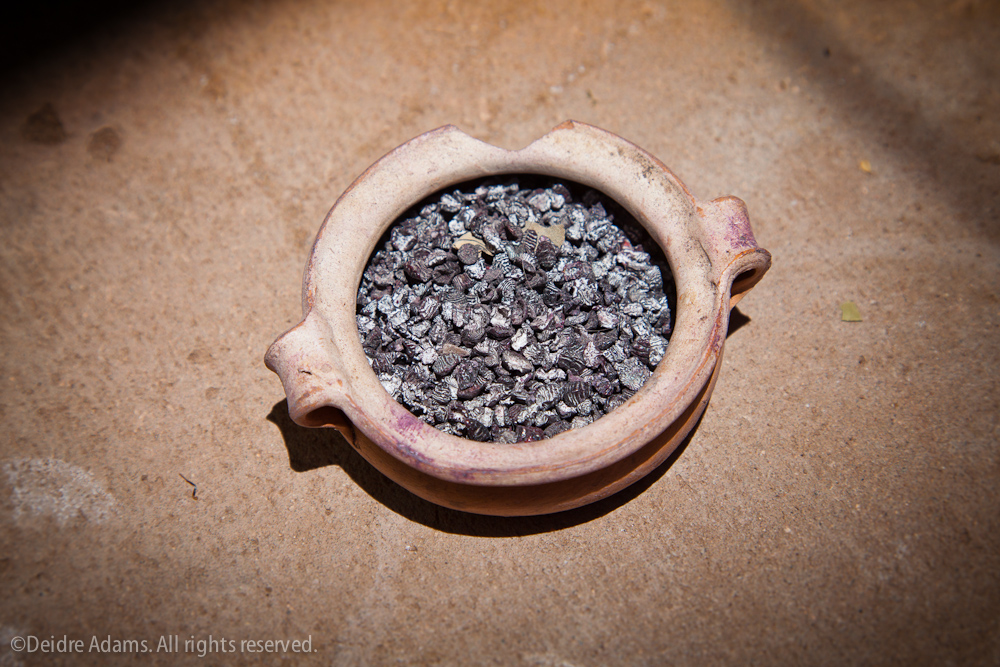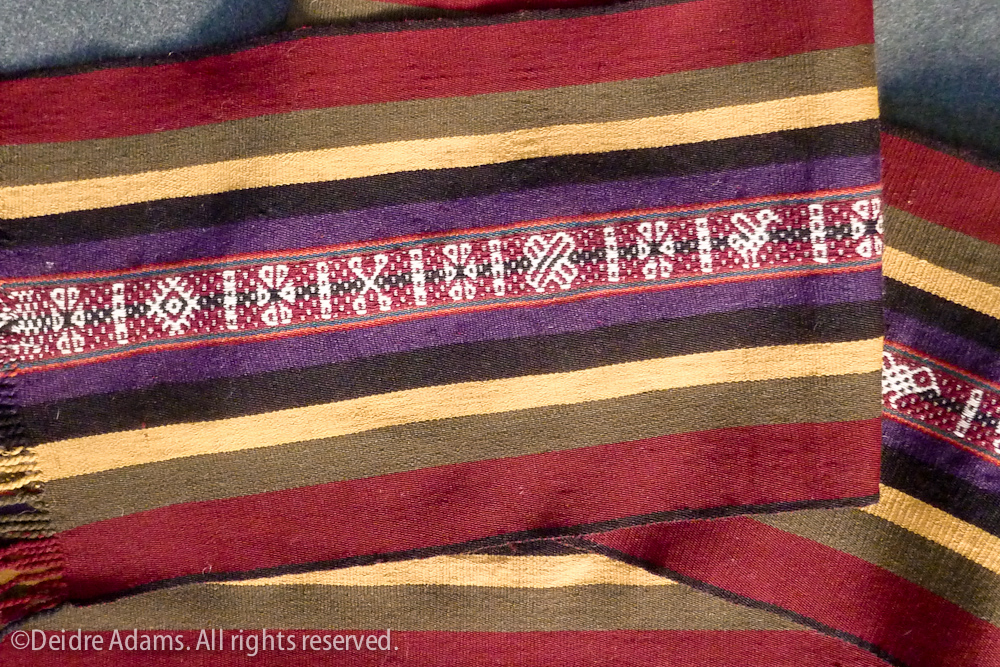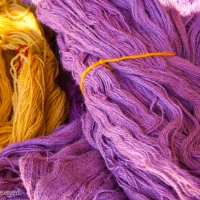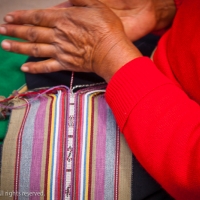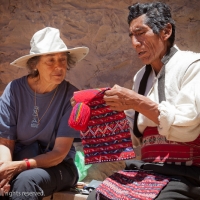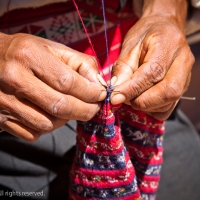Peru, Part 9 – Between Puno & Cusco
I have to backtrack just a bit, because I forgot some good photos from the road trip to Cusco. The one time we didn’t have a private van for just our small group, we traveled in a stylish tour bus with luxurious seats and beverage service. This was the restroom for the bus station, probably the nicest one I saw on the whole trip.
We stopped in a small town called Pukara. This was the first time we saw “toritos,” pairs of small pottery bulls that adorn the rooftops and other parts of most houses in this region. They keep the house safe and bring health and well-being to the occupants.
Pukara (“fortress” in Quechua) is an important archaeological site. They have a small museum, Museo Litico Pukara, where we saw some some of the ancient sculptures from the site. Wall signage describes the devoradores (“devourers”), sculptures which are holding heads and were at one time interpreted to depict rituals of human sacrifice, although some now argue that no one knows if that’s truly the case. Another sign describes Pachamama:
It is an ancient custom of the peoples of the Altiplano to hold rituals, both throughout the year as well as on feast days. An example of a ritual conducted frequently would be the rite of fertility known as the Pachamama, or payment to the Mother Earth. For the peoples of the Andes, their cosmology was intertwined with many aspects of their daily lives.
Another sign describes the arrival of the Spaniards and the building of a Catholic church in the center of the ancient ceremonial center. Then they began the “extirpation of idolatries,” a campaign during which colonial authorities “destroyed or defaced most of the monoliths and effigies considered to be pagan idols.”
After more time on the road, we stopped for a nice lunch and met more llamas. Did you ever see the movie The Emperor’s New Groove? (About the only later Disney movie I really enjoyed.) For one thing, I now know why there was a character in the movie named Pacha. But more importantly, if you saw the movie, you would be familiar with the character Emperor Kuzco (played by David Spade), who is a self-absorbed young king who gets turned into a llama. When I saw this guy (below), I realized from his antics that whoever animated Kuzco had spent some time studying llamas.
I was about to take another picture of him, when he decided he’d had enough and proceeded to charge me:
